
Spatial dispersive shock waves generated in supersonic flow of Bose-Einstein condensate past slender body PDF
Preview Spatial dispersive shock waves generated in supersonic flow of Bose-Einstein condensate past slender body
Spatial dispersive shock waves generated in supersonic flow of Bose-Einstein condensate past slender body G.A. El1 and A.M. Kamchatnov2 6 1Department of Mathematical Sciences, Loughborough University 0 0 Loughborough LE11 3TU, UK 2 2Institute of Spectroscopy, Russian Academy of Sciences, n a Troitsk 142190, Moscow Region, Russia J 5 2 February 8, 2008 ] S P Abstract . n i Supersonic flow of Bose-Einstein condensate past macroscopic obstacles is studied l n theoretically. It is shown that in the case of large obstacles the Cherenkov cone trans- [ forms into a stationary spatial shock wave which consists of a number of spatial dark 2 solitons. Analytical theory is developed for the case of obstacles having a form of a v slender body. This theory explains qualitatively the properties of such shocks observed 1 6 in recent experiments on nonlinear dynamics of condensates of dilute alkali gases. 0 4 In usual compressible fluid dynamics, there are two typical situations when shock waves 0 5 canbegenerated. Thefirstoneisconnectedwithbreakingofanonlinearwaveandthesecond 0 with a supersonic flow past a body (see, e.g., [1, 2, 3]). In a viscous fluid, the shock wave / n can be represented as a narrow region within which strong dissipation processes take place i l and the thermodynamic and hydrodynamic parameters of the flow undergo sharp change. n : If viscosity is negligibly small compared with dispersion effects, the shock discontinuity is v i resolved into an expanding region filled with nonlinear oscillations. A remarkable feature X of such a “dispersive shock” is generation of solitons at one of its boundaries so that the r a whole structure can often be asymptotically represented as a “soliton train”. The theory of dispersive shocks based on the Whitham nonlinear modulation theory was developed for media described by the Korteweg-de Vries (KdV) equation as for the wave breaking case [4], so for the flow past a slender body [5]. In the latter case the “soliton train” represents a “fan” of oblique spatial solitons spreading downstream from the pointed part of the body. After experimental discovery of the Bose-Einstein condensate (BEC) [6, 7, 8], it was found that its dynamics is described very well by the Gross-Pitaevskii (GP) equation (see, e.g., [9]) ∂ψ ~2 i~ = ∆ψ +U(r)ψ +g ψ 2ψ, (1) ∂t −2m | | where ψ(r) is the order parameter (“condensate wave function”), U(r) is the potential which confines atoms of Bose gas in a trap, and g is an effective coupling constant arising due to 1 inter-atomic collisions with the s-wave scattering length a , s g = 4π~2a /m, (2) s mbeingtheatomicmass. TheGPequation(1)combinesthedispersive andnonlineareffects, and the corresponding properties of BEC dynamics have been investigated in a number of papers (see for review, e.g., [9]). In particular, if g > 0, then existence of dispersive shocks can be expected, their theory was developed in [10, 11] and they were observed in a recent experiment [12]. Although in the experiment [12] the shock flow was strongly disturbed by vortices arising due to rotation of the condensate, we were informed [13] about unpublished results of experiments on shocks in non-rotating BEC, and these results agree qualitatively with the theory [10]. In experiments [12, 13], the shocks were generated by sharp push of cylindrical BEC from its axis by a laser beam propagating along the axis. After breaking of a cylindrical nonlinear wave the dispersive shock occurs which consists of a train of concentric cylindrical solitons. Besides theexperiments ongenerationofshocks afterwave breakingofBEC’s flow, in[13] the experiments were performed on BEC’s flow past an obstacle after release of BEC from the confining potential. The problem of superflow past a body has been studied intensively in connection with a problem of critical velocity v above which superfluidity disappears (see, c e.g., [14, 15]). It was found that superfluidity is lost due to generation of vortex rings behind an obstacle which gives the estimate of critical velocity v (~/dm)ln(d/ξ), (3) c ∼ where ξ = ~/√2mn g is the healing length (i.e., “vortex core size”), d is the size of obstacle 0 intransverse direction, andn isthedensity ofatomsinthecondensate farfromtheobstacle. 0 For large obstacles with d ξ this estimate gives the critical velocity much less than the ≫ sound velocity c = ~/√2mξ. (4) s This transition to dissipative behaviour in quantum fluids described by the GP equation (1) was confirmed by numerical study [16, 17, 18] where it was found that indeed vortices are generated at velocities above the critical one about 0.45c for d = 10ξ. s ∼ Since the radius of vortex rings (or distance between vortices in pairs in two dimensions) isabouttheobstaclesized, thismechanism ofvorticesemission becomesineffective ford ξ, ∼ andforsuchsmallbodies(“impurities”) thecriticalvelocityarisesduetoCherenkov emission of sound waves and coincides, hence, with the sound velocity c [19]. Obviously, emission s of waves in a supersonic flow past an obstacle remains effective also for large obstacles with d ξ, but in this case emitted waves are not linear sound waves and, instead of ≫ a Cherenkov cone, we arrive at the above mentioned dispersive shock consisting of oblique spatialsolitons. Actually, these shock waves have been observed intheexperiment [13]where the wave pattern consists of a series of distinct oblique traces which cannot be attributed to a linear Cherenkov radiation implying appearance of a single cone but can be explained by generation of supersonic spatial solitons in the flow similar to those predicted by the KdV dynamics in [3], [5]. An easy estimate shows that, after long enough time of expansion, the velocity of the flow past a body is much greater than the local sound velocity in BEC near this body. Indeed, the flow velocity u in a free expansion has the order of magnitude of the 2 sound velocity at the center of BEC before its release and it is known that the sound speed −1 in BEC is proportional to the square root of density. Since for the expansion time t ω ⊥ (ω⊥ is the radial trap frequency before expansion) the density is proportional to t−≫2 (see, e.g., [20]), we find that the ratio of the expansion flow velocity to the local sound speed, i.e. the Mach number M, is about M ω⊥t 1 (5) ∼ ≫ −1 for t ω . This corresponds approximately to conditions of the experiment [13] where ⊥ ≫ formation of a “fan” of spatial solitons was observed. Motivated by the results of this experiment andabovephysical argumentation, weshalldevelopherethetheoryofhypersonic spatial dispersive shocks on the basis of the GP equation (1). In accordance with the experiment [12, 13], we consider a two-dimensional flow of the condensate, so that the condensate wave function ψ depends on only two spatial coordinates r = (x,y). To simplify the theory, we assume that the characteristic size of the body is much less than its distance from the center of the trap, so that incoming flow can be considered as uniform with constant density n of atoms and constant velocity u directed parallel to 0 0 x axis. It is convenient to transform Eq. (1) to a “hydrodynamic” form by means of the substitution r i ψ(r,t) = n(r,t)exp u(r′,t)dr′ , (6) ~ (cid:18) Z (cid:19) wheren(r,t)isdensity ofatomsinBpECandu(r,t)denotesitsvelocityfield, andtointroduce dimensionless variables x˜ = x/√2ξ, y˜= y/√2ξ, t˜= (c /2√2ξ)t, n˜ = n/n , u˜ = u/c , where s 0 s numerical constants are introduced for future convenience. As a result of this transformation we obtain the system (we omit tildes for convenience of the notation) 1n + (nu) = 0, 2 t ∇ ( n)2 ∆n (7) 1u +(u )u+ n+ ∇ = 0 2 t ∇ ∇ ∇ 8n2 − 4n (cid:20) (cid:21) (where = (∂ ,∂ )) which should be solved with the boundary conditions x y ∇ n = 1, u = (M,0) at x (8) → −∞ for incoming flow and u N = 0 (9) · |S at the body surface S, where N denotes a unit vector of outer normal to the surface S. Under our assumption that the size of the body is much less than the distance from the center of the cylindrically symmetrical flow, the characteristics of the flow near the body change withthe timevery slowly, so thatthe arising wave patterncanbeconsidered asquasi- stationary. Hence, we can confine ourselves to the steady solutions of our problem (7)–(9) and replace Eqs. (7) by their stationary versions for two-dimensional stationary velocity field u = (u(x,y),v(x,y)): (nu) +(nv) = 0, x y n2 +n2 n +n x y xx yy uu +vu +n + = 0, x y x 8n2 − 4n (10) (cid:18) (cid:19)x n2 +n2 n +n x y xx yy uv +vv +n + = 0. x y y 8n2 − 4n (cid:18) (cid:19)y 3 If the body is symmetric with respect to x axis and the form of its boundary is given by the function y = F(x), F(0) = 0, F(L) = 0, L being the longitudinal size of the body in ± dimensionless units, then we can confine ourselves to consideration of only the upper half- plane y > 0, so that N (F′(x), 1), and the boundary conditions (8), (9) are transformed ∝ − to n = 1, u = M, v = 0 at x , (11) → −∞ ′ v = uF (x) at y = F(x). (12) The system (10)–(12) is still too complicated for analytical treatment. However, the flow is supposed to be supersonic (see (5)) which allows us to asymptotically transform Eqs. (10)– (12) to a much simpler problem of 1D “unsteady” flow along y axis with the scaled x coordinate playing the role of “time” [21]. To this end, we substitute into Eqs. (10) new variables u = M +u +O(1/M), T = x/2M, Y = y, (13) 1 assuming M−1 1. Then to leading order we obtain ≪ 1n +(nv) = 0, 2 T Y n2 n (14) 1v +vv +n + Y YY = 0, 2 T Y Y 8n2 − 4n (cid:18) (cid:19)Y 1u +vu = 0. (15) 2 1T 1Y Equations (14) represent the hydrodynamic form of 1D defocusing nonlinear Schr¨odinger (NLS) equation 2 iΨ +Ψ 2 Ψ Ψ = 0 (16) T YY − | | for a complex field variable Y ′ ′ Ψ = √nexp i v(Y ,t)dY , (17) (cid:18) Z (cid:19) and we can apply well-known methods to their study. If n and v are found from the system (14), then the correction u to the x component of velocity can be calculated with the use 1 of Eq. (15). It is remarkable that in the case of a slender body, for which Mα . 1 where α = max F′(x) , the boundary condition (12) reduces (to leading order in M−1) to | | v = v = 1df/dT at Y = f(T), (18) p 2 where f(T) = F(2MT), and it does not contain the u-variable in this approximation. Thus, we have reduced the problem of flow past a slender body to the classical “piston” problem for 1Dflow alonga tube witha piston moving accordingto thelaw (18). In ordinary gas dynamics, such a piston motion leads to the generation of two shock waves which form due to the breaking of the flow profile during two different phases of the piston motion: forward and reverse. In the original 2D problem this corresponds to the supersonic flow past the front and the rear parts of the body respectively and is accompanied by the occurrence 4 of two spatial shocks (oblique compression jumps) spreading from the body edges (see [1] for instance). In contrast to the classical gas dynamics, the piston problem is now posed for dispersive equations(14). Beforeweproceedwiththeanalysisofthisproblemweoutlinethequalitative structure of the dispersive flow past finite-length body using the results in [3], [5]. This will help us then to reformulate the piston problem for the NLS equation in terms of much better explored initial-value problem. In dispersive hydrodynamics, both shocks (breaking singularities) spreading from the body edges resolve into nonlinear oscillatory zones, the dispersive shocks. At finite distances from the body surface these two dispersive shocks have similar structure (see [4]): each represents a modulated nonlinear wave having a form close to a chain of solitons at one edge of the oscillatory zone and degenerating into a linear wave at the opposite edge. However, at large distances from the body the two dispersive shocks demonstrate drastically different behaviour: in the physical systems with negative dispersion studied in [5] the dispersive shock spreading from the front edge of the body transforms into a soliton train while the dispersive shock forming at the rear end of the body completely degenerates into a small- amplitude linear radiation. In the case of the NLS equation describing nonlinear waves with positive dispersion the qualitative picture will be reversed, i.e. the “nontrivial” dispersive shock transforming into a (dark) soliton train will form due to the flow past the rear part of the body (reverse motion of the piston in the corresponding nonstationary problem). In the Y(T) λ T 1 Y2(T) II III I Y*(T) T 1 0 Y*(T) 2 f(T) λ+(Y,0)−1 Y Figure1: (Y,T)-planeofthepistonproblem(Y > 0)andtheequivalent initialdataλ (Y,0)) + (Y < 0) for the Riemann invariant. The shaded area marks a “soliton” part of the initial ∗ profile. Dashed line: the “piston” trajectory Y = f(T). The lines Y (T), Y (T) are the 1,2 1,2 edges of the front and rear dispersive shocks respectively. present work we will be concerned with this wave only. We now formulate the problem of the rear dispersive shock description in a mathemati- cally consistent way. The relevant part of the (Y,T)-plane in the auxiliary piston problem is subdivided into three distinct regions (see Fig. 1). Generally, for Y > f(T), the “gas” is 5 put into motion by the “piston” moving according to Eq. (18) and in the region I near the “piston” the gas motion can be described by the dispersionless limit 1n +(nv) = 0, 1v +vv +n = 0 (19) 2 T Y 2 T T Y of Eqs. (14). But formal solution of the dispersionless equations cannot be extended to the whole (Y,T)-plane because the Y-derivatives blow up along some line in this plane. Hence, here we have to take into account the dispersion effects which lead to formation of the region II filled with nonlinear oscillations—a dispersive shock. Close to its boundary Y = Y (T) 1 the oscillations tend to a train of dark solitons of the NLS equation (16), and at the opposite boundaryY = Y (T)theamplitude ofoscillationstends tozero which corresponds toa linear 2 “sound” wave propagating into the undisturbed region III with Y > Y (T). For T L/M 2 ≫ the whole structure can be asymptotically represented as a soliton train [5]. Thus, in the case of a macroscopic obstacle with characteristic size much greater than the healing length ξ the Cherenkov cone “unfolds” into a “fan” of solitons. The outlined nonlinear dispersive flow is described most conveniently in terms of the Riemann invariants (see, e.g., [23, 22]). In the regions I and III of the smooth flow these are the Riemann invariants of the dispersionless system (19) λ± = 21v ±√n, (20) which satisfy the equations ∂λ± ∂λ± +V±(λ+,λ−) = 0, (21) ∂T ∂Y where the characteristic velocities are V+ = 3λ+ +λ−, V− = 3λ− +λ+. (22) In the dispersive shock region II, there are four Riemann invariants λ , i = 1,2,3,4, which i parameterize the modulated periodic solution of the full system (14), and obey the corre- sponding Whitham modulation equations [24] ∂λ ∂λ i i +V (λ ,λ ,λ ,λ ) = 0, i = 1,2,3,4. (23) i 1 2 3 4 ∂T ∂Y For the case of the defocusing NLS equation the characteristic velocities V (λ ,...,λ ) rep- i 1 4 resent certain combinations of the complete elliptic integrals of the first and the second kind [25] (see also [23, 22]). We do not need the concrete expressions for them here. The dispersionless Riemann invariants (20) are constant along the corresponding families ofcharacteristicsofthesystem(19)andtheymustsatisfythematchingconditionswithtwoof the Riemann invariants λ of the Whitham equations (23) along the lines Y = Y (T), which i 1,2 represent (free) boundaries of the dispersive shock (see [26, 27] for a detailed description of the matching problem for the solutions of systems (21) and (23)). In the undisturbed region III, where v = 0, n = 1, both Riemann invariants (20) are constant: λ± = 1. According to the well-known argumentation about the flow adjacent to ± a simple wave (see [1], Section 104), one of the Riemann invariants λ , i = 1,2,3,4, which i 6 matches with, say, λ− (for sake of definiteness we assume that it is λ4) must also be constant in the whole region II: λ4 = λ− = 1 in II. On the other hand, the gas motion in the − region I produced by the “piston” is described by a simple wave solution of Eqs. (19) (see [1], Section101)againwithoneRiemanninvariant constant everywhere inI. Itmust matchwith λ4 along the characteristic line Y = Y1(T) so that λ− = λ4 = 1 in the whole (Y,T)-plane − including the trajectory of the “piston”. Hence, we have at the “piston” v /2 √n = 1 p p − − which yields the gas density, n = (v +2)2/4, and, consequently, the values of both Riemann p p invariants: λp = 1, λp = 1df/dT +1 at Y = f(T). (24) − − + 2 To use the method of Ref. [22], we have to transform these boundary conditions at the “piston” to the equivalent initial conditions at T = 0, Y < 0 (see Fig. 1). This problem for the system (19) can be easily solved using characteristics. Indeed, we have λ− = 1, hence − λ obeys the simple wave equation following from (21) (see, e.g., [22]) + ∂λ ∂λ + + +(3λ 1) = 0 (25) + ∂T − ∂Y whose general solution is Y = (3λ 1)T +Y(λ ). (26) + + − The function Y(λ ) must be chosen so that the condition (24) is satisfied. This gives at + once Y(λ ) = f(τ) (3λ 1)τ, (27) + + − − where τ is determined implicitly by the equation λ = 1f′(τ) + 1. Thus, we arrive at a + 2 parametric form of the equivalent initial distribution of the Riemann invariant λ : + λ = 1f′(τ)+1, Y = f(τ) (3f′(τ)+2)τ. (28) + 2 − 2 In principle, knowing the initial data for the Riemann invariants λ±, one can construct the full solution of the Whitham system (23) using the extended Gurevich-Pitaevskii problem formulation (see [26],[27]) and thus, to asymptotically describe the dispersive shock for all Y,T. However, if one is interested in the asymptotic structure of the flow in the region far enough from the body where the rear dispersive shock develops into a “fan” of spatial solitons well separated from each other, one can take advantage of a more simple asymptotic method of Ref. [22]. According to the asymptotic method developed in Ref. [22] each soliton in the soliton train evolving from the initial pulse is parameterized by the eigenvalue λ of the generalized k Bohr-Sommerfeld quantization rule (λk −λ+)(λk −λ−)dY = 2π(k + 21), k = 0,1,...,K, (29) I p where in our case λ+(Y) is given by Eq. (28), λ− = 1, and the integration is taken over − the cycle around two turning points where the integrand functions vanishes. Returning to the spatial coordinates (13), we find the profile of the λ -soliton in the train as (see [22]) k 1 λ2 n (x,y) = 1 − k , (30) k − cosh2[ 1 λ2(y (λ /M)x)] − k − k p 7 that is the “fan” of spatial dark solitons in the shock is made of soliton “feathers” lying asymptotically along the lines y = (λ /M)x, k = 0,1,...,K, (31) k in the upper half-plane and symmetric “fan” of solitons is generated in the lower half-plane. Let us illustrate this theory by an example of a body with a parabolic profile 2 y = F(x) = αx(L x)/(2M) , 0 x L, (32) − ≤ ≤ or Y = αT(T T), 0 T T , (33) 0 0 − ≤ ≤ where T = L/2M, so that the initial condition (28) takes the form 0 λ = 1α(T 2τ)+1, Y = τ(2ατ αT /2 2), (34) + 2 0 − − 0 − for 0 τ T , that is in the interval T (2 3αT /2) Y 0, and λ = 1 outside this 0 0 0 + ≤ ≤ − − ≤ ≤ interval; see Fig. 2. Its part with λ > 1 evolves into non-solitonic wave which does not give + λ + λ2 1 λ1 λ0 Y Y Y 2l 2r Figure 2: The plot of λ as a function of Y for the parabolic body profile (32). Dashed lines + labeled by λ , λ , λ etc denote the levels corresponding to these eigenvalues, Y and Y 0 1 2 2l 2r illustrate positions of the left and right turning points corresponding to the eigenvalue λ in 2 this instance. any contribution into the shock. However, its “well” part λ < 1 leads to the bound states + in the spectral problem (29) and, hence, to the train of spatial solitons (30) generated in the shock. Integral in (29) is calculated in a closed form which gives the equation 4√2 (1+4λ 27αT )(1αT 1+λ )3/2 = k + 1, k = 0,1,...,K, (35) 15πα k − 4 0 2 0 − k 2 and its roots λ must lie in the interval 1 αT /2 < λ < 1. The greatest root λ has k 0 k K − a value close to unity so that the number of solitons in the shock is given approximately by (35) with λ = 1, k = K. To transform this estimate to dimensional variables, we take k 8 l = √2ξL = 2√2ξMT as a longitudinal size of the obstacle, d = 2√2ξf(T /2) = √2ξαT2 0 0 0 as its transverse size and obtain 1 27Md ld K = 1 . (36) ∼ 3π − 10 l sMξ2 (cid:18) (cid:19) Although this formula is derived for a slender body, we can use it as a rough estimate of a number of solitons in the shock generated in the supersonic flow past an obstacle: K = const (ld/Mξ2)1/2, (37) ∼ · where K must be much greater than unity. The most shallow dark soliton lies near the Cherenkov cone with angle θ = 1/M = c /u with respect to the direction of the flow. The ∼ s 0 resulting pattern is shown in Fig. 3. 15000(cid:13)(cid:13) C h ere n k o v c o n e 200(cid:13) 400(cid:13) 600(cid:13) 800(cid:13) 1000(cid:13) -50(cid:13)(cid:13) -100(cid:13) Cherenkov cone Figure 3: The pattern of dispersive shocks generated by a BEC supersonic flow with M = 5 past a slender body (black cigar-shaped figure). The oblique lines represent the traces of dark solitons in the (x,y)-plane. All dimensions are measured in units of √2ξ. In conclusion, we have developed the theory of spatial dispersive shock waves generated by a flow of Bose-Einstein condensate past a slender body. The theory predicts formation of a series of oblique spatial solitons in the flow and explains qualitatively the shock patterns observed in the experiment [13]. We are grateful to E.A. Cornell and P. Engels for information about the results of the experiments of JILA group prior to publication. AMK thanks RFBR (grant 05-02-17351) for financial support. References [1] L.D. Landau and E.M. Lifshitz, Fluid Mechanics, Pergamon Press, Oxford, 1987. [2] G.B. Whitham, Linear and Nonlinear Waves, Wiley–Interscience, New York, 1974. [3] V.I. Karpman, Nonlinear Waves in Dispersive Media, Nauka, Moscow, 1973. 9 [4] A.V. Gurevich and L.P. Pitaevskii, Sov. Phys. JETP, 38 (1974) 291. [5] A.V. Gurevich, A.L. Krylov, V.V. Khodorovskii and G.A. El, JETP, 81 (1995) 87; 82 (1996) 709. [6] M.N. Anderson, J.R. Ensher, M.R. Mathews, C.E. Wieman and E.A. Cornell, Science, 269 (1995) 198. [7] K.B. Davis, M.-O. Mewes, M.R. Andrews, N.J. van Druten, D.S. Durfee, D.M. Kurn, and W. Ketterle, Phys. Rev. Lett. 75 (1995) 3969. [8] C.C. Bradley, A. Sackett, and R.G. Hulet, Phys. Rev. Lett. 75 (1995) 1687; 78 (1997) 985. [9] L.P. Pitaevskii and S. Stringari, Bose-Einstein Condensation, Cambridge University Press, Cambridge, 2003. [10] A.M. Kamchatnov, A. Gammal, and R.A. Kraenkel, Phys. Rev. A 69 (2004) 063605. [11] B. Damski, Phys. Rev. A 69 (2004) 043610. [12] T.P. Simula, P. Engels, I. Coddington, V. Schweikhard, E.A. Cornell, and R.J. Ballagh, Phys. Rev. Lett. 94 (2005) 080404. [13] E.A. Cornell and P. Engels (private communication). [14] R.P. Feynman, Statistical Mechanics, Benjamin, Reading, 1972. [15] P. Nozi`eres and D. Pines, The Theory of Quantum Liquids II, Addison–Wesley, Red- wood City, 1990. [16] T. Frisch, Y. Pomeau, and S. Rica, Phys. Rev. Lett. 69 (1992) 1644. [17] T. Winiecki, J.F. McCann, and C.S. Adams, Phys. Rev. Lett. 82 (1999) 5186. [18] J.S. Stießborger and W. Zwerger, Phys. Rev. A 62 (2000) 061601(R). [19] G.E. Astrakharchik and L.P. Pitaevskii, Phys. Rev. A 70 (2004) 013608. [20] A.M. Kamchatnov, Zh. Eksp. Teor. Fiz. 125 (2004) 1041 [JETP 98 (2004) 908]. [21] G.A. El, V.V. Khodorovskii, and A.V. Tyurina, Phys. Lett. A 333 (2004) 334. [22] A.M. Kamchatnov, R.A. Kraenkel, and B.A. Umarov, Phys. Rev. E 66 (2002) 036609. [23] A.M. Kamchatnov, Nonlinear Periodic Waves and Their Modulations, World Scientific, Singapore, 2000. [24] G.B. Whitham, Proc. Roy. Soc. 283A (1965) 238. [25] M.V. Pavlov, Theor. Math. Phys. 71 (1987) 351. [26] A.V. Gurevich, A.L. Krylov, Sov. Phys. JETP 65 (1987) 944. [27] G.A. El, A.L. Krylov, Phys. Lett. A 203 (1995) 77. 10
The list of books you might like

The Spanish Love Deception

Rich Dad Poor Dad

Atomic Habits James Clear

The 48 Laws of Power
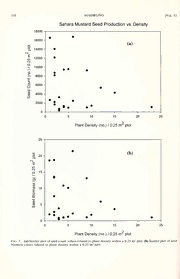
SEED PRODUCTION BY THE NON-NATIVE BRASSICA TOURNEFORTII (SAHARA MUSTARD) ALONG DESERT ROADSIDES

Investigating Psychology 2 - From Social to Cognitive

Carleson Potentials and the Reproducing Kernel Thesis for Embedding Theorems
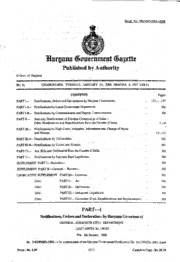
Haryana Gazette, 2006-01-04, No. 4
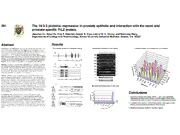
DTIC ADA609546: Functional Characterization of a Novel Prostate-Specific Gene PrLZ in Prostate Cancer

Theban Plays

C. Indice de autores

Opportunities in fashion careers
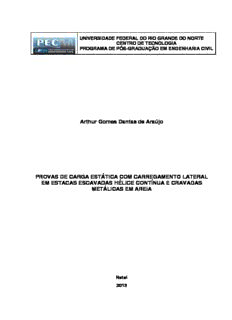
Arthur Gomes Dantas de Araújo PROVAS DE CARGA ESTÁTICA COM CARREGAMENTO ...

Two new species of the genus Gymnomus Loew from Asia (Diptera: Heleomyzidae)

1 AJANTA BULDHANA.cdr
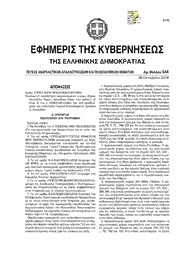
Greek Government Gazette: Part 10, 2009 no. 544

The Internet of Things

Artisan industries in Asia
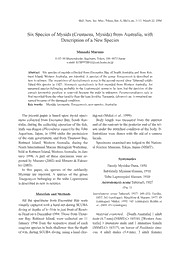
Six species of mysids (Crustacea: Mysida) from Australia, with description of a new species

jumbo_comics_124.cbr
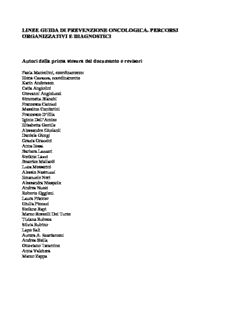
Cap 1 Lo screening oncologico

Goldvogel (Das verlorene Königreich - Band 2)


